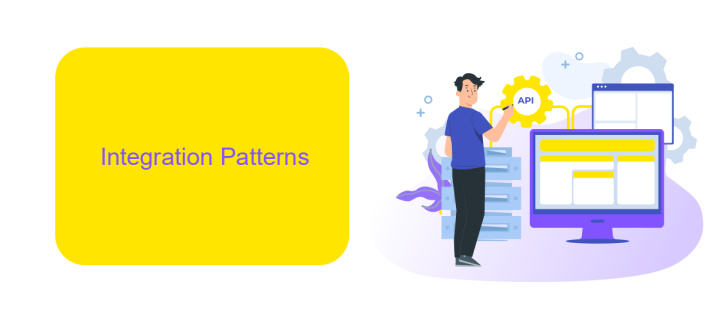Master Data Management Integration Patterns
Master Data Management (MDM) Integration Patterns are essential for ensuring data consistency, accuracy, and reliability across an organization. By leveraging these patterns, businesses can streamline their data processes, enhance decision-making, and maintain a single source of truth. This article explores various MDM integration patterns, highlighting their benefits, implementation strategies, and best practices for achieving optimal data management.
Introduction
Master Data Management (MDM) is a crucial aspect of modern enterprise data management, ensuring that the core business data is accurate, consistent, and accessible across the organization. As businesses grow and evolve, the need for effective MDM integration patterns becomes increasingly important to maintain data integrity and streamline operations.
- Data Consolidation: Aggregating data from multiple sources into a single, unified view.
- Data Propagation: Distributing master data across various systems and applications.
- Data Federation: Providing a virtual view of data from multiple sources without physical consolidation.
- Data Synchronization: Ensuring data consistency across different systems in real-time or near-real-time.
Understanding and implementing the right MDM integration patterns can significantly enhance an organization's ability to manage its data effectively. By choosing the appropriate pattern, businesses can reduce redundancy, improve data quality, and ensure that critical information is readily available for decision-making processes. This section delves into various MDM integration patterns, offering insights on how to leverage them for optimal data management.
Integration Patterns

Master Data Management (MDM) integration patterns are essential for ensuring seamless data flow across various systems within an organization. These patterns include point-to-point integration, hub-and-spoke, and publish/subscribe models. Point-to-point integration connects systems directly, but can become complex as the number of systems increases. Hub-and-spoke centralizes data exchange through a central hub, simplifying management but potentially creating a single point of failure. The publish/subscribe model enables systems to subscribe to data changes, promoting real-time updates and scalability.
Implementing these patterns effectively often requires robust integration platforms. ApiX-Drive, for example, offers a versatile solution for automating data synchronization across multiple systems. It supports various integration patterns and provides tools for mapping, transforming, and validating data. By leveraging such services, organizations can enhance their MDM strategies, ensuring consistent and accurate master data across all platforms. This not only improves data quality but also streamlines operations and decision-making processes.
Technical Implementation

Implementing Master Data Management (MDM) integration patterns requires a systematic approach to ensure data consistency and reliability across various systems. The process involves several technical steps to align and synchronize master data effectively.
- Data Profiling: Analyze and understand the data sources to identify data quality issues and discrepancies.
- Data Standardization: Establish common data formats and standards to ensure uniformity across different systems.
- Data Integration: Utilize ETL (Extract, Transform, Load) tools to consolidate data from multiple sources into a central repository.
- Data Matching and Merging: Implement algorithms to identify and merge duplicate records, ensuring a single source of truth.
- Data Governance: Define and enforce policies for data quality, access, and usage to maintain data integrity.
By following these steps, organizations can achieve a robust MDM integration framework. This not only enhances data accuracy but also provides a unified view of critical business information, enabling better decision-making and operational efficiency.
Integration Challenges

Integrating Master Data Management (MDM) systems into existing IT landscapes presents numerous challenges. Organizations often face difficulties ensuring seamless data flow and maintaining data quality across various systems. These challenges can impede the effectiveness of MDM initiatives and require strategic planning and robust solutions.
One of the primary hurdles is the integration of disparate data sources. Different systems may use varied data formats, standards, and protocols, making it difficult to consolidate information into a unified MDM system. Additionally, ensuring real-time data synchronization across multiple platforms can be complex and resource-intensive.
- Data inconsistency and duplication
- Complexity of legacy systems
- Scalability issues
- Data security and compliance
- High integration costs
Addressing these challenges requires a comprehensive approach that includes thorough data profiling, establishing data governance frameworks, and leveraging advanced integration tools. By doing so, organizations can achieve a cohesive MDM environment that supports accurate and timely decision-making.
- Automate the work of an online store or landing
- Empower through integration
- Don't spend money on programmers and integrators
- Save time by automating routine tasks
Conclusion
Master Data Management (MDM) integration patterns are essential for ensuring data consistency, accuracy, and accessibility across an organization. By implementing robust MDM strategies, businesses can streamline their data processes, reduce redundancy, and enhance decision-making capabilities. Effective integration patterns help in aligning disparate data sources, promoting a unified view of critical business information, and facilitating seamless data flow across various systems.
Leveraging tools like ApiX-Drive can significantly simplify the process of integrating multiple data sources. ApiX-Drive offers a user-friendly interface and powerful automation capabilities, making it easier to connect and synchronize data from different platforms. By utilizing such services, organizations can reduce the complexity of their MDM initiatives, ensuring that data remains up-to-date and reliable. Ultimately, adopting effective MDM integration patterns and leveraging advanced integration tools can lead to improved operational efficiency and better business outcomes.
FAQ
What is Master Data Management (MDM) Integration?
Why is MDM Integration important for businesses?
What are some common MDM Integration patterns?
How can businesses automate MDM Integration processes?
What challenges might businesses face with MDM Integration?
Apix-Drive is a simple and efficient system connector that will help you automate routine tasks and optimize business processes. You can save time and money, direct these resources to more important purposes. Test ApiX-Drive and make sure that this tool will relieve your employees and after 5 minutes of settings your business will start working faster.


